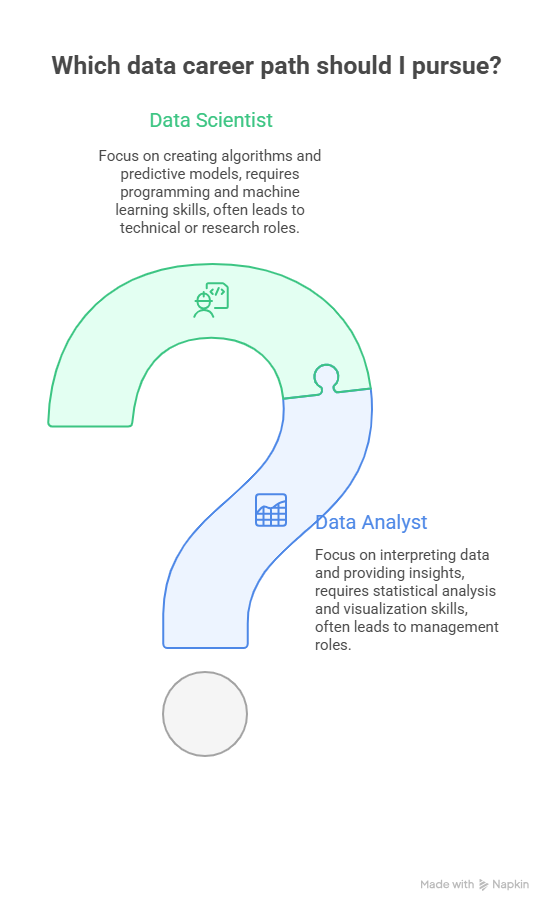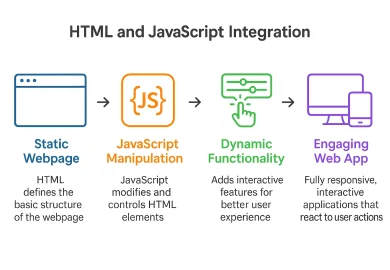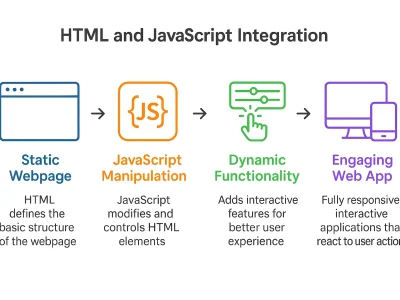Data Analyst vs Data Scientist: Key Differences Explained
In today’s technology-driven and data-focused world, the job roles of data analysts and data scientists have emerged as the most valuable career pathways. For instance, an exponential projected growth of 36% in data science roles and over 23% in demand for data analysts makes it indispensable to choose the appropriate career path.
The Revolution of Data: A Career Treasure Trove
Data is restructuring how companies make decisions, understand customer behavior, and innovate, in finance, healthcare, marketing, logistics, and other sectors. Companies are resorting to data-driven decision-making, paving the path for both data analysts and scientists. Although both Data Analysts and Data Scientists offer dynamic work opportunities, they differ fundamentally in skills, tools, scope, and career direction. The essential difference between the two fields lies in that data analysts focus on discovering insights using tools such as Excel, SQL, and B.I. platforms, while data scientists execute machine learning and statistical modelling concepts to resolve complex, predictive problems.
At TuteDude, we have created this comprehensive guide to help you understand the key differences between Data Analyst and Data Scientist roles, including education, salary, tools, and career growth. The underlying idea of curating the guide is to help ambitious data professionals to future-proof their career choices and make informed decisions in the advancing field of data analytics and data science.
Who is a Data Analyst?
A Data Analyst is a skilled professional who generally transforms structured data sets into profound insights to support strategic business decision-making. Often acting as a bridge between data and strategy, analysts resort to the use of statistical methodology and business intelligence tools to comprehend historic data sets, identify patterns, and deliver actionable reports. Majorly, the role of data analysts revolves around descriptive analytics, i.e. facilitating easy understanding of what has happened and why.
A typical day in the role of a data analyst includes cleaning and processing of data sets. Further, their daily activities include running queries on SQL, understanding data trends, and creating dashboards using Excel, Power BI, Google Sheets, and Tableau. Depending on their specialisation, analysts may be designated as business analysts, marketing analysts, or financial analysts. For instance, a business analyst may evaluate operational KPIs, while a financial analyst may detect patterns in financial markets.
Moreover, industries such as finance, retail, e-commerce, healthcare, and telecommunications rely heavily on data analysts to inform strategic business decisions. A real-world example of a data analyst is a retail analyst who optimizes pricing and inventory by analyzing sales performance across geographical zones. In a nutshell, data analysts play a crucial role in transforming data into stories that drive growth.
Who is a Data Scientist?
A Data Scientist is a highly skilled data professional who often manages large, unstructured datasets to design analytical models that inform strategic decision-making. Although data analysts usually concentrate on describing what happened, data scientists dig deeper into predictive and prescriptive analytics, utilizing advanced statistical procedures and machine learning algorithms to address complex questions such as “what’s next” and “what if” scenarios.
The daily tasks of data scientists often include collecting data from diverse sources, training models, wrangling data, engineering features, and optimizing performance. Generally, tools such as Python, R, SQL, TensorFlow, scikit-learn, and big data platforms such as Spark and Hadoop are used. Furthermore, unlike analysts, data scientists often work with unstructured data sets, including text, images, and sensor data, discovering both technical and creative skill sets.
Within the field of data science, specializations exist in areas such as natural language processing (NLP), computer vision, deep learning, and AI-driven decision-making models. Typically, industries such as technology, healthcare, finance, automotive, and cybersecurity hire data scientists to resolve complex problems, including the detection of risks associated with patients and the detection of fraud.
5 Key Differences Between Data Analysts and Data Scientists
Although both roles are driven by the core component i.e., data, and are fundamental in driving today’s economy, the key skill set, responsibilities, and tools used by data scientists and analysts differ in various ways. Let’s explore the key differences between these job roles and understand what makes these career paths apart:
a. Technical Skill Set
Data analysts typically use SQL, Excel, and BI tools such as Tableau and Power BI to work with complex data sets. The typical role of analysts includes analyzing trends, reporting, and presenting factual statistics. On the other hand, data scientists are required to have a strong professional foundation of programming languages, with regular use of Python, R, and Machine learning libraries (such as TensorFlow). Furthermore, scientists also utilize data engineering tools such as Spark and Hadoop to tackle complex, unstructured data sets.
- Problem-Solving Methodology
The significant difference in the methodology of analysts and scientists lies in the analysis they perform. For instance, data analysts specialise in the use of descriptive analysis i.e., helping businesses understand what happened previously. While data scientists focus on predictive and prescriptive data analysis, thereby building algorithms to predict future consequences and recommend practical remedial actions.
- Data Handling and Complexity
Analysts work with clean, structured data sets, while scientists often tackle the processing of unstructured or semi-structured data sets, including images or text. - Tools and Technology
Analysts often rely on reporting and dashboard design tools, such as Power BI, Looker, and Google Sheets. While scientists utilise large data platforms, including machine learning frameworks and cloud technologies such as Azure and AWS. These scientists often work in high-scale computing and automation ecosystems. - Education, Salary, and Career Path
Typically, data analysts hold a bachelor’s degree in business, statistics, or economics and can subsequently transition into roles such as Business Intelligence or product analysis. However, data scientists often hold master’s or PhDs in computer science, AI, or data science. Moreover, this academic disparity often reflects in the compensation structure, i.e., data scientists earn higher packages than analysts and can move into machine learning engineering or chief data officer roles.
Data Analyst v/s Data Scientist: Quick Overview of the Differences
Table 1.0
| Sr. No. | Point of Difference | Data Analyst | Data Scientist |
|
|
Primary Responsibilities | Descriptive Analysis and Reporting | Advanced Analytics |
|
|
Data Set | Structured | Structured & Unstructured |
|
|
Tools | SQL, Google Sheets, Tableau | Spark, Hadoop, SQL, etc. |
|
|
Academic Requirements | Bachelor’s in Statistics or Economics | Master’s or PhD in Computer Science or Data Science |
|
|
Career Options | Junior Analyst- Senior Analyst- Business Intelligence Manager | Data Scientist- Machine Learning Engineer-Chief Data Officer |
|
|
Salary Range | INR 5 lakhs/annum- INR 13 lakhs/annum | INR 9 lakhs/annum (Junior) – INR 45 lakhs/annum (Lead) |
Education Requirements: Data Analyst v/s Data Scientist
Generally, data analysts hold a bachelor’s degree in statistics, economics, or a related field, while data scientists are typically master’s degree holders in fields such as AI or computer science. In case you intend to transition into the data analysis or data science field, you may take up credible certificate courses from TuteDude or IBM.
Essential Skills for Data Analysts
The essential skill set for data analysts includes proficiency in Excel, SQL, and BI tools, as well as expertise in data cleaning, visualization, and business intelligence.
Essential Skills for Data Scientists
Furthermore, the essential skill set for data scientists includes advanced skills in R, Python, machine learning and cloud computing, in addition to problem-solving abilities.
Career Path Comparison: Growth Opportunities in Data Roles
Usually, both data scientists and analysts adhere to a well-structured, highly powerful growth structure, similar across all industries:
Entry-Level
Generally, graduates in either role begin as Junior Data Analysts or Junior Data Science Associates, while simultaneously enhancing their technical and business intelligence skills.
Mid-Level
Furthermore, professionals with 2-5 years of experience typically advance to roles such as Business Analyst, Data Strategist, or Machine Learning Engineer, depending on their domain expertise.
Senior-Level
Highly skilled professionals often transition into leadership roles, such as Lead Data Scientist or Chief Data Officer, while driving data-driven innovation. Moreover, multi-lateral transitions into growth strategy, consulting, or products are usually witnessed, especially in powerful sectors such as technology, healthcare, or finance.
Salary Comparison: Data Analyst vs Data Scientist Compensation
Usually, both data analysts and scientists are highly compensated basis their experience and designation. Salary variations depend on industry, geographical location, and nature of the role. India’s demand for data professions is on the rise, while the demand for machine learning and domain expertise enhances the compensation structure.
Salary Comparison
Table 2.0 (Source: upGrad)
| Role | Entry-Level | Mid-Level | Senior-Level |
| Data Analyst | INR 3-6 lakhs/annum | INR 6-12 lakhs/annum | INR 12-15 lakhs/annum |
| Data Scientist | INR 5-8 lakhs/annum | INR 8-15 lakhs/annum | INR 15-35 lakhs/annum |
Tools and Technologies Comparison
Generally, data analysts predominantly use Google Sheets, Excel, and SQL while querying structured data sets, in addition to BI tools such as Power BI, Looker, and Tableau for designing dashboards. For statistical analysis, R and SPSS are commonly used. On the other hand, data scientists typically utilize Scala, R, and Python, in addition to TensorFlow and PyTorch, to design predictive models. Moreover, scientists also utilize Spark and cloud platforms, such as AWS and Azure, for data processing. Although both roles typically employ standard tools, the use cases differ in terms of complexity and scalability.
Which Career is Right for You?
Are you in a fix? Is the choice between the two roles confusing you? Well, the choice between data scientist and analyst highly depends on your strengths, career goals and business acumen. For instance, if you are interested in discovering patterns in structured data sets and designing reports and dashboards, a career in data analytics will cater to your business-oriented personality. However, if you enjoy advanced math programming and want to design AI-powered solutions, a career in data science will provide you with a structured technical path.
To begin, try to understand your learning style, the investment of resources, and your available bandwidth. A career in data analytics requires a proactive approach, while a career in data science calls for technical upskilling. Alternatively, you may explore projects in both fields to understand your interests in both domains, your level of engagement, and the nature of your interaction.
Conclusion
As we have learned so far, both data analysts and scientists work towards data-driven solutions; however, they differ significantly in complexity and strategic approach. For instance, the primary focus of analysts is evaluation, while that of scientists is predictive analysis. Most importantly, if you are inclined towards a business-oriented approach, data analytics offers you the appropriate career trajectory. Whereas, if technology drives you and you are well-versed with coding and modelling, data science provides a more suitable career path. Irrespective of your choice, consistency and experience shall drive your career in the right direction. Start Learning today! To better understand the domains, enroll in our tailored learning programs, designed and led by experts.





